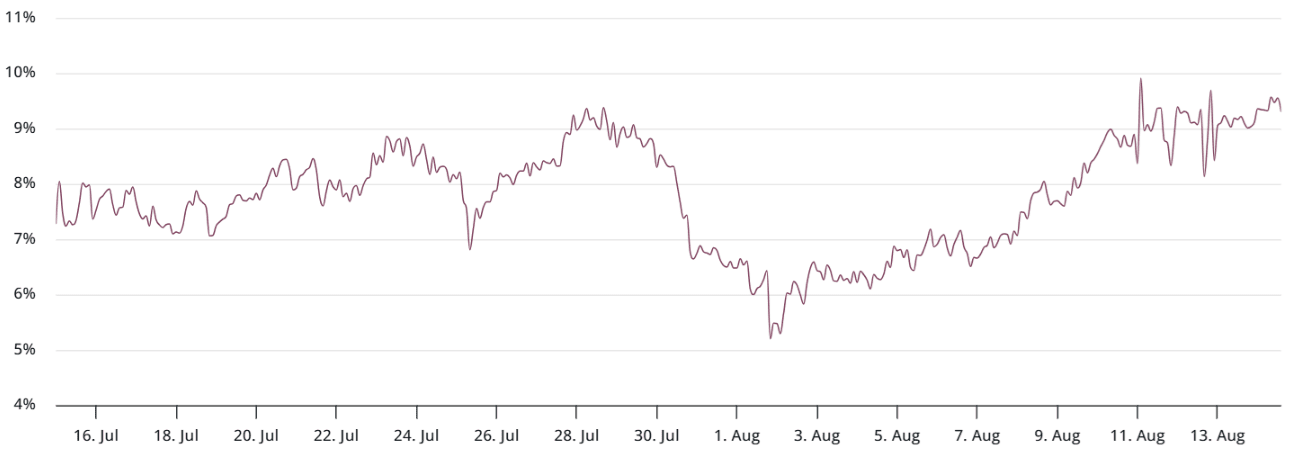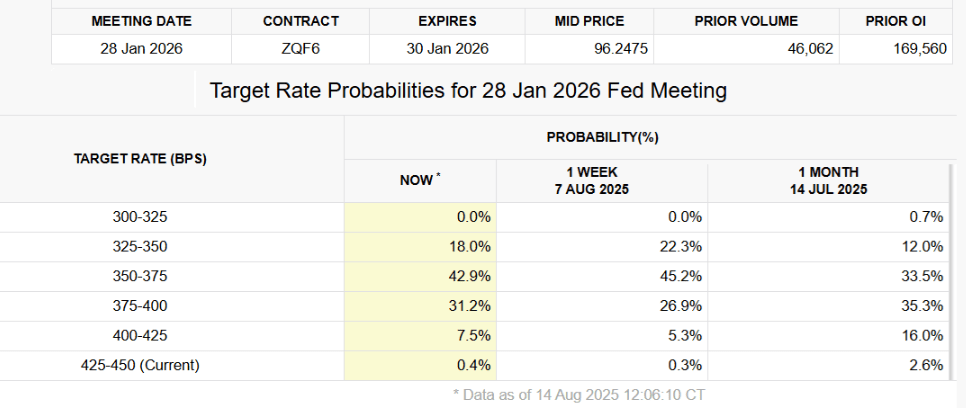Bitcoin has taken investors on a roller coaster after reaching an all-time high of $124,089 and then dropping to $117,500, resulting in the liquidation of $227 million in leveraged positions, although derivative indicators were hardly affected.
The question arises whether investors are overreacting to U.S. inflation data, or if there is some factor within the cryptocurrency market itself that is preventing a clear breakout above $122,000.

The annual premium of Bitcoin futures contracts was almost unaffected by the $6,630 drop. Currently, this indicator stands at 9%, within the neutral range of 5%-10%. This suggests that the recent record highs were not due to excessive leverage and that investors have remained calm despite prices falling below $118,000. However, the data also hints at a lack of confidence in a rally up to $150,000.
Is high inflation the cause of Bitcoin's decline?
It can be argued that the 3.3% annual increase in the U.S. Producer Price Index (PPI) in July has made investors more cautious, due to this inflation figure being higher than expected. The initial negative reaction reflects a lower probability of multiple rate cuts. However, the S&P 500 eventually recovered and erased the day's losses, suggesting that Bitcoin's sharp correction may be influenced by other factors.

According to the CME FedWatch tool, the implied probability of the Federal Reserve (Fed) cutting interest rates to 3.75% or lower in January 2026 is currently 61%, down from 67% a week ago. This indicates a decline in confidence regarding strong monetary policy easing, a context that typically puts pressure on risk assets like Bitcoin.
Market reaction
Investors appear to have reacted negatively to U.S. Treasury Secretary Scott Bessent's statement that the government has no plans to expand Bitcoin purchases for the Strategic Reserve Fund. In an interview with Fox Business, Bessent also dismissed the idea of reallocating funds gained from the Treasury's gold revaluation into Bitcoin. This message contrasts with market expectations, as the Executive Order signed by U.S. President Donald Trump in March specifically mentioned 'neutral budget strategies to acquire more Bitcoin.'
The Bitcoin options market shows resilience
To assess whether Bitcoin investors expect prices to continue declining, we should evaluate the delta skew of options. Higher costs for put options often indicate a bearish market, causing this indicator to move above the neutral threshold of 6%.

Currently, the Bitcoin options skew stands at 3%, indicating a balanced risk outlook, consistent with a healthy market. Importantly, traders have shown resilience even as Bitcoin has struggled to hold above $120,000. While this does not imply confidence in a sustainable rally, it suggests little concern about testing the $110,000 support level.
Since U.S. stocks erased most of their losses following the release of the latest inflation numbers, it is likely that Bitcoin traders have taken advantage of this move to lock in profits. Greater concern seems to arise from macroeconomic conditions, especially as U.S. government debt has surpassed the $37 trillion mark.
Bitcoin remains well-positioned to achieve profits in 2025, supported by central banks expanding their balance sheets to offset budget imbalances. However, based on weak activity in derivative markets, enthusiasm for a decisive breakout above $120,000 seems limited.